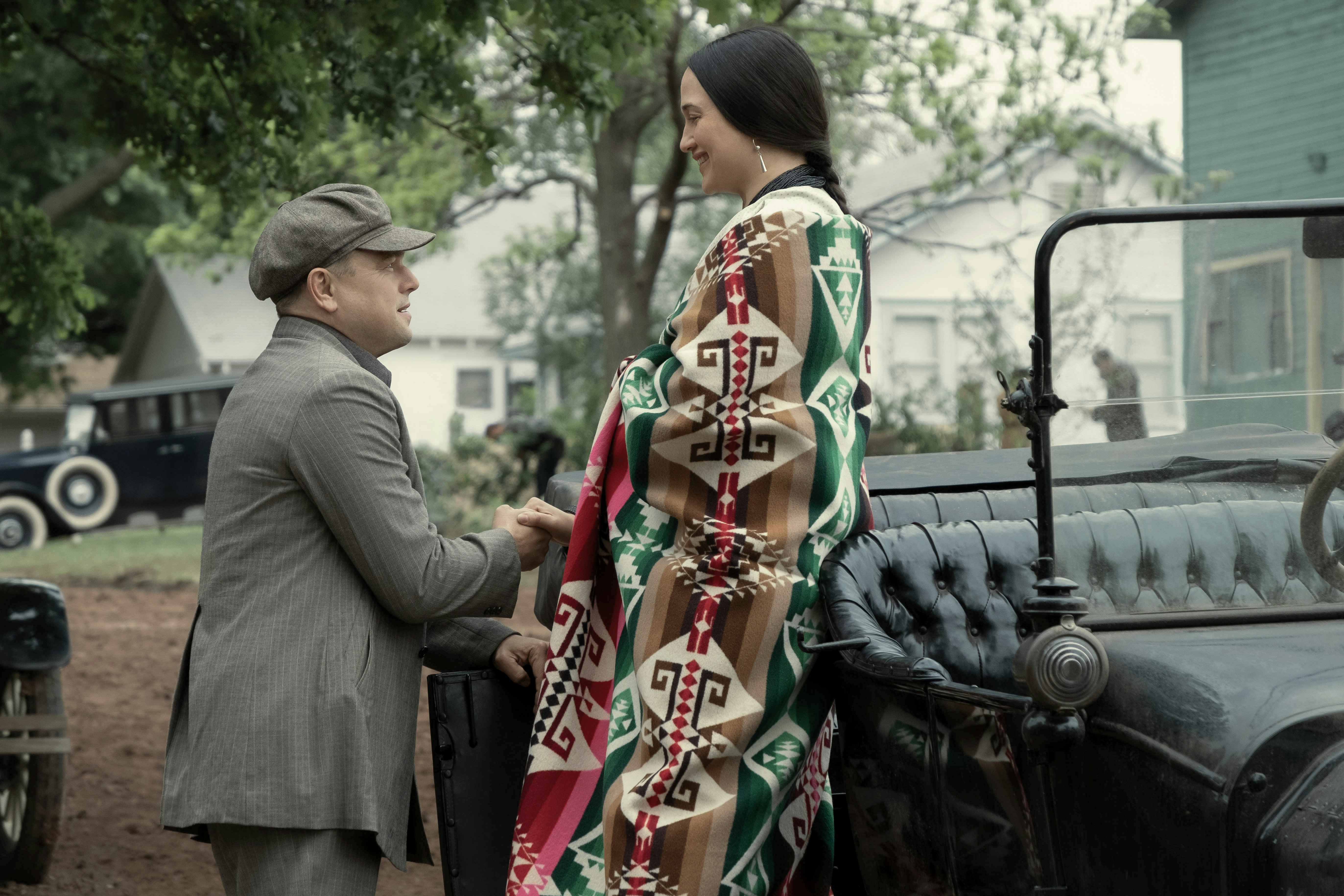
These days, it’s hard to write about Martin Scorsese without mentioning the (largely unearned) criticisms everyone with an internet connection directs at the legendary director. Scorsese only directs gangster films. His films are too long and pretentious. They’re too sympathetic to the seedy criminal underworld he’s depicting. It only takes a few minutes with any of the films from Scorsese’s vast and rich catalog to see that these criticisms are wildly misguided.
All the same, Scorsese is not a director above a little introspection. His quietly devastating The Irishman saw him reflect on a career spent helming the kind of thrilling crime dramas the 2019 gangster epic meticulously and tragically dismantled. But where The Irishman allowed Scorsese to turn the camera on himself, Killers of the Flower Moon turns it on his audience.
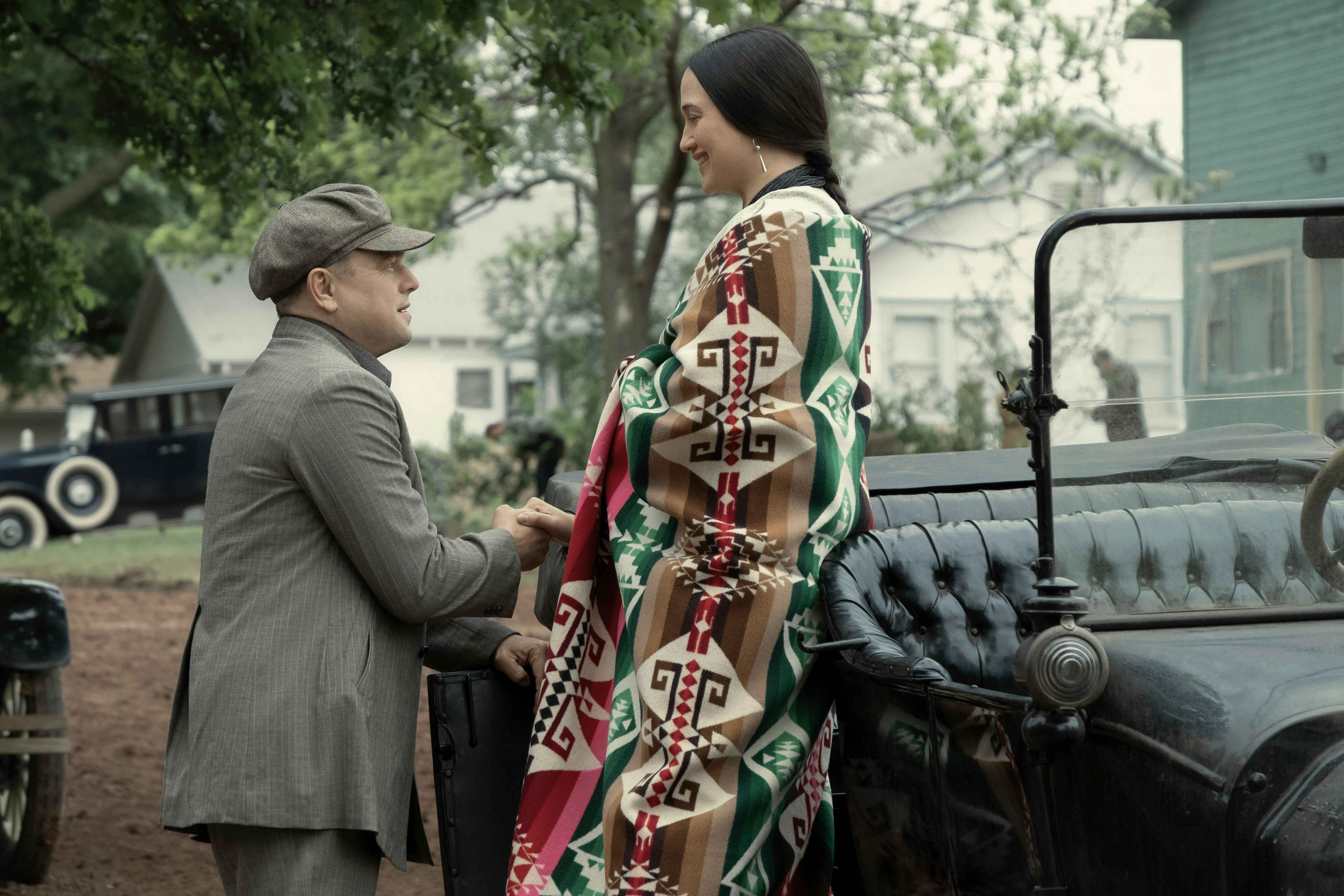
A towering achievement of immense empathy and startling historical truths, Killers of the Flower Moon shows a master at work on a level few can achieve. It’s a repudiation of the glamorized gangster movie Scorsese has become so associated with, a deconstruction of the romanticized Western genre, and a condemnation of you, the audience, the complacent viewer who gobbles up the very things we so frequently criticize. And it does all this within the framework of a sweeping American tragedy that built the bloody, rotting foundation upon which our country currently stands.
Based on the 2017 nonfiction book by David Grann, Killers of the Flower Moon tells the true story of a series of murders in the Osage Nation throughout the 1920s, after oil was discovered on tribal lands. The oil, and the headrights over the lands that contain it, become the impetus for the murders by greedy white Americans who envy the Osage families that grew wealthy overnight.
Scorsese’s Killers of the Flower Moon begins by showing all its cards. While David Grann’s book frames the Osage murders as a true-crime whodunit, Scorsese immediately lays out who’s to blame for the deaths that tear apart the dwindling Native American families in the North Oklahoma reservation.
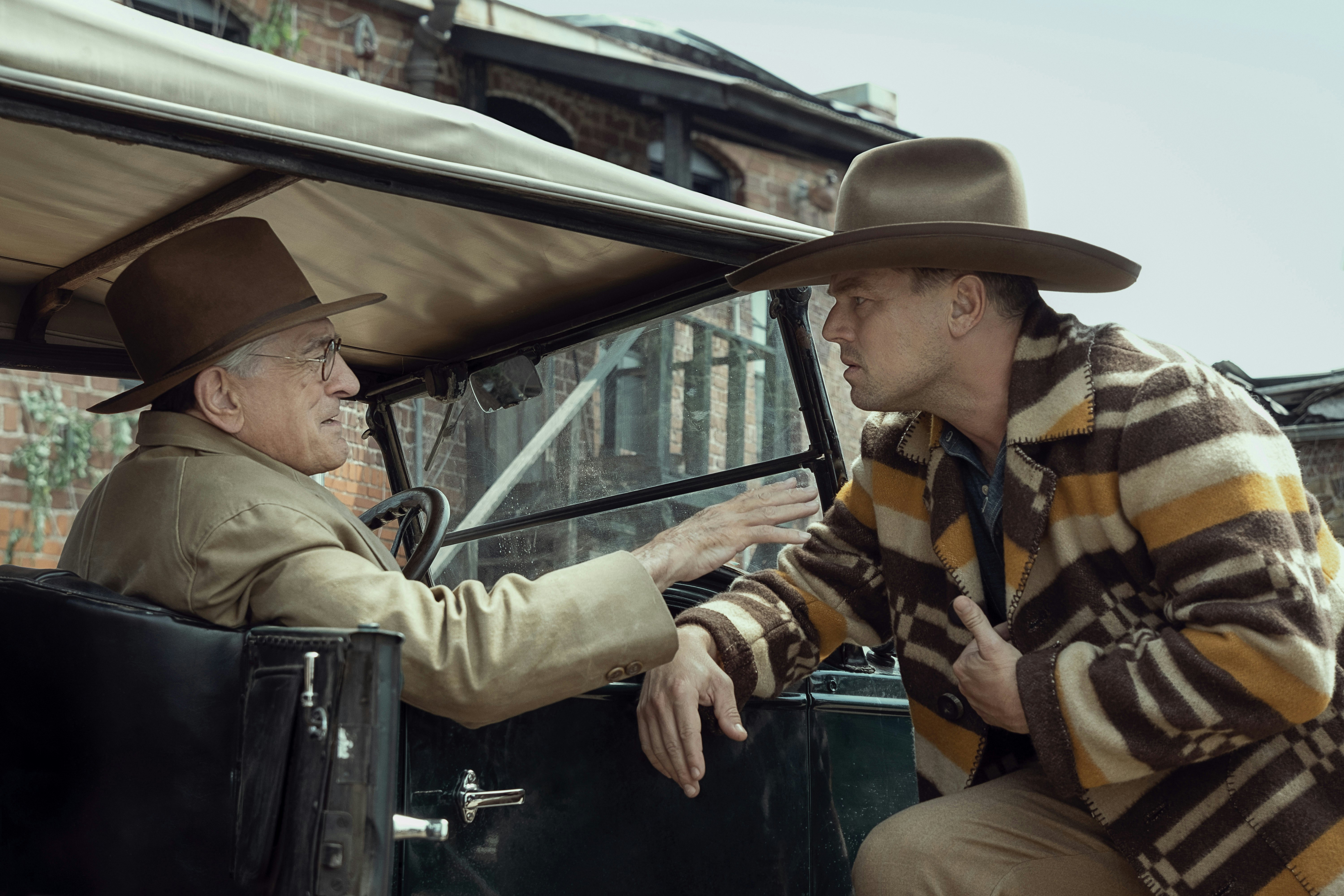
The faces of this vast and insidious criminal operation are none other than Scorsese’s most prolific muses, Robert De Niro and Leonardo DiCaprio, who play influential cattle rancher William King Hale and his easily influenced nephew, Ernest Burkhart. Hale, an affable fixture of the community who insists everyone calls him King, is a friend of the Osage and one of their most vocal supporters, taking troubled members under his wing and offering charity at every turn. But his generous public persona disguises a ruthless schemer who seeks to take control of the oil-rich lands by any means necessary, whether by blackmail, intimidation, or, most frequently, murder.
It’s never made clear whether the crucial part of Hale’s plan, the headrights of the wealthy Kyle family, were manipulated by him from the start, or if they fell into his lap thanks to a genuine romance between his foolish, weak-willed nephew, Ernest, and the Kyle heir, Mollie (a shatteringly terrific Lily Gladstone). But once the whirlwind courtship results in marriage between Ernest and Mollie, the murders begin to ramp up to frighteningly brutal levels.
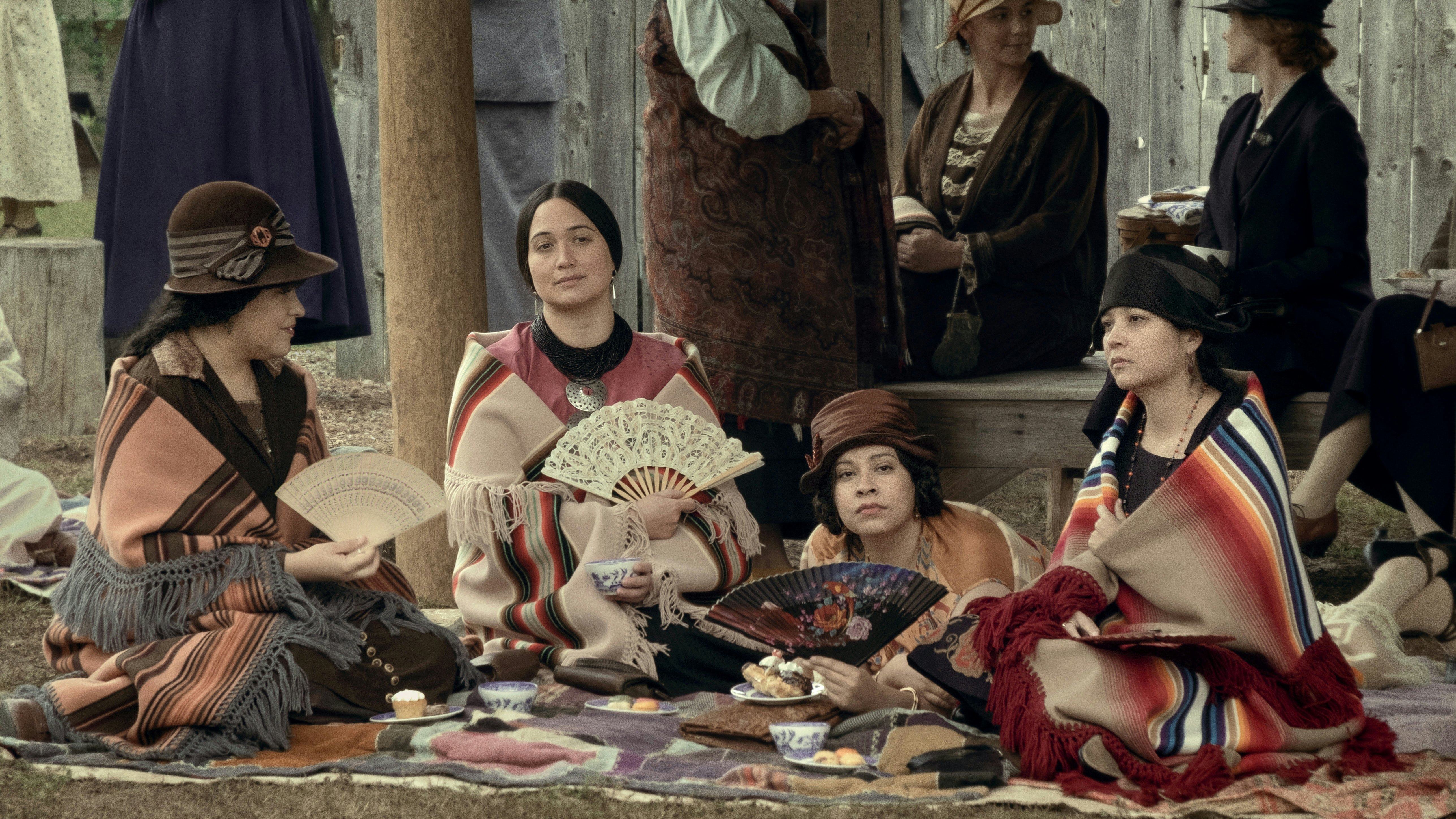
Co-written by Scorsese and Eric Roth, Killers of the Flower Moon moves forward with an uneasy, ominous grace, as if this tragedy was an inevitable part of the fabric of American history. Grann’s book reveals the vast criminal conspiracy that systematically killed the Osage people as a shocking twist, but Scorsese’s film makes it a tragic fact of life. Before the murders even started, the Osage were exploited at every turn, with the Indigenous owners of the coveted headrights unable to even access their funds without the approval of a white guardian (effectively, they were a modern-day conservatorship). This reduced the wealthy Osage to nothing more than obstacles for greedy capitalists like Hale and his collaborators, who kill frightened Indigenous people with a cold-hearted pragmatism that feels even more shocking and upsetting than Scorsese’s bloodiest shootout.
At every turn, Scorsese breaks down and undercuts what we come to expect from this kind of true-crime thriller. He weaponizes De Niro and DiCaprio’s movie-star charisma, first to show how they embed themselves into the lives and good graces of Mollie’s family, only to ruthlessly pick them off one by one, and then to reflect to the audience a darkly twisted version of the gangster movie we’ve come to expect from the director. There are no slick kills or thrilling shootouts. Instead, everything unfolds with a solemn, foreboding doom. It’s a gangster movie written as a monster movie, in which Hale and his collaborators are painted as thoroughly unredeemable villains — Scorsese daring us to try accusing him of glamorizing crime. All the sympathy instead falls with Mollie, the lone survivor of a family slowly annihilated by Hale’s empire.
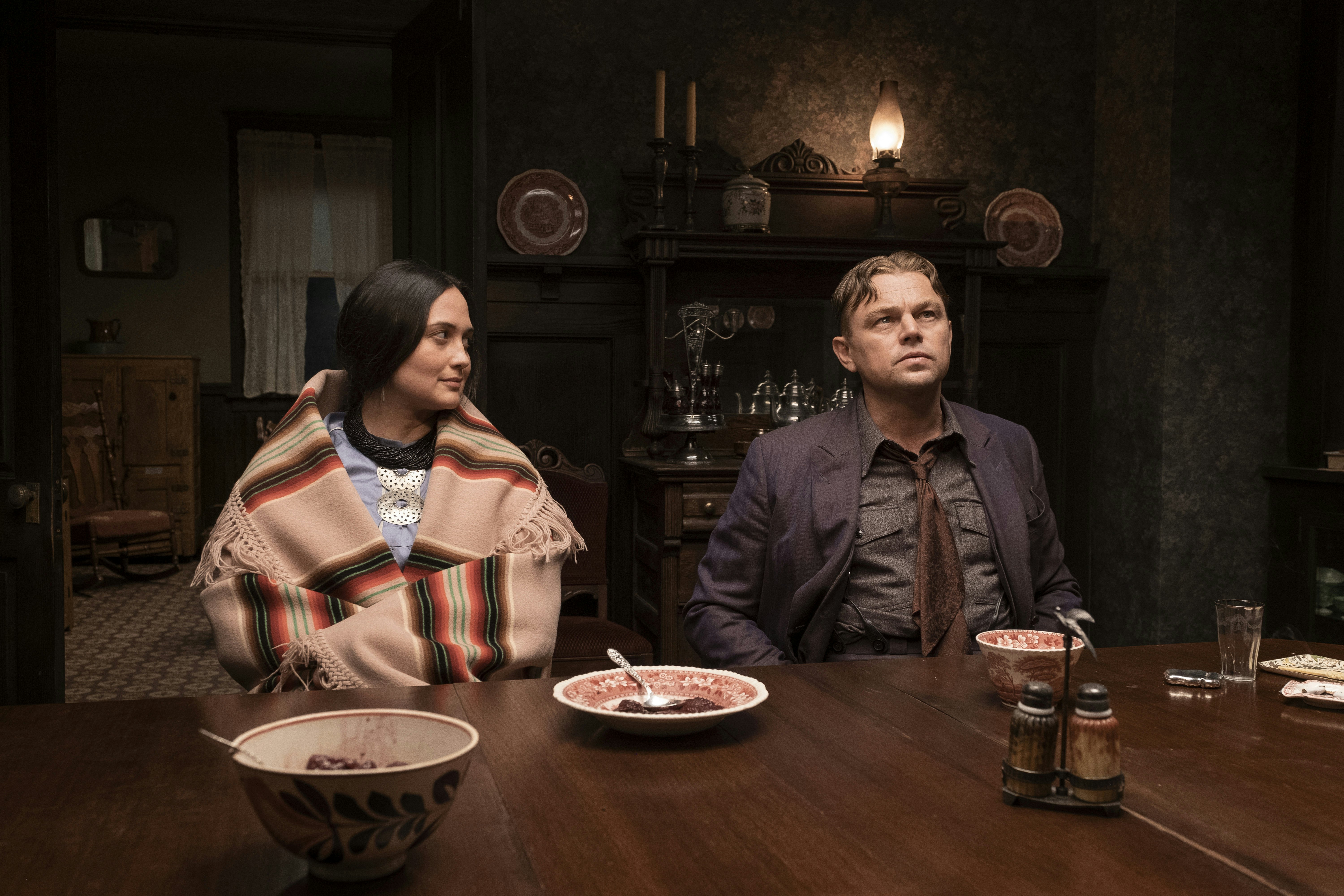
The harrowing tragedy of the Osage murders unfolds in her weary, accusatory gaze, which directs itself at everyone around her. Gladstone is the shining, agonizing heart at the center of Killers of the Flower Moon, a figure of mythic proportions reduced to a helpless victim by the people she trusts the most. De Niro and DiCaprio are both excellent, too — De Niro delivers a subdued performance that feels partly like an homage to Marlon Brando in The Godfather, while DiCaprio gives a brilliantly vanity-free performance as the idiotic, easily-manipulated Ernest. Both wisely give space to Gladstone’s tremendous performance.
Even as the film descends into a star-studded third act that begins with the late-act introduction of Jesse Plemons’ federal agent, the film remains with Mollie and the Osage people. Gladstone, and the Osage cut down so ruthlessly by Hale’s operation, are lent the importance they’d never been afforded by history.
Killers of the Flower Moon is an American master putting his stamp on a slice of forgotten Americana. It’s Scorsese using the associations we have with him — the director of pow-bang gangster movies and glamorous crime capers — to render an epic tragedy all the more sweeping, intimate, and urgent. It may not be a call to arms, but it is a silent, mournful scream.







